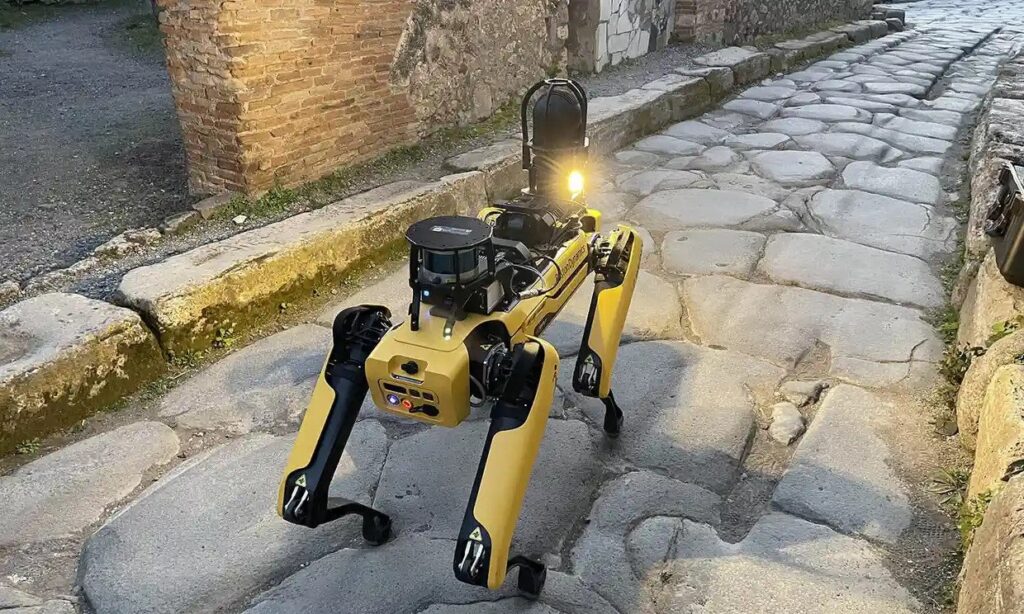New Technology Employed to Protect Pompeii
A four-legged robot called Spot has been deployed to wander around the ruins of ancient Pompeii, identifying structural and safety issues while delving underground to inspect tunnels dug by relic thieves.

The dog-like robot is the latest in a series of technologies used as part of a broader project to better manage the archaeological park since 2013 when Unesco threatened to add Pompeii to a list of world heritage sites in peril unless Italian authorities improved its preservation.
Spot, made by the US-based Boston Dynamics, is capable of inspecting even the smallest of spaces while “gathering and recording data useful for the study and planning of interventions”, park authorities said.
The aim, they added, is to “improve both the quality of monitoring of the existing areas, and to further our knowledge of the state of progress of the works in areas undergoing recovery or restoration, and thereby to manage the safety of the site, as well as that of workers.”
Until Spot came along, no technology of its kind had been developed for archaeological sites, according to Gabriel Zuchtriegel, the director of Pompeii archaeological park.
Park authorities have also experimented with a flying laser scanner capable of conducting 3D scans across the 66-hectare (163-acre) site.

Zuchtriegel said: “Technological advances in the world of robotics, in the form of artificial intelligence and autonomous systems, have produced solutions and innovations typically associated with the industrial and manufacturing world, but which until now had not found an application within archaeological sites due to the heterogeneity of environmental conditions, and the size of the site.”
The spot will also be tested for use in underground tunnels made by tombaroli, or tomb raiders, who for years made a fortune by digging their way into the ruins and stealing relics to sell to art traffickers around the world.
The thieves have been less successful since 2012, when Italy’s art police intensified a crackdown on cultural crime, although tunnels are still being found in the area around Pompeii.
“Often the safety conditions within the tunnels dug by grave robbers are extremely precarious, and so the use of a robot could signify a breakthrough that would allow us to proceed with greater speed and in total safety,” said Zuchtriegel.





